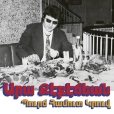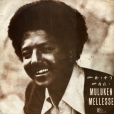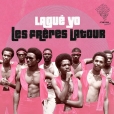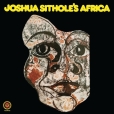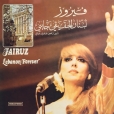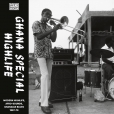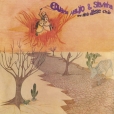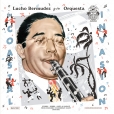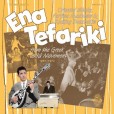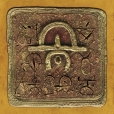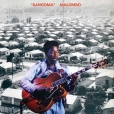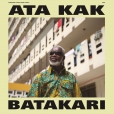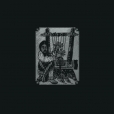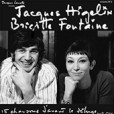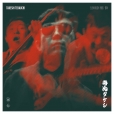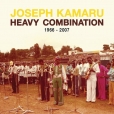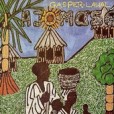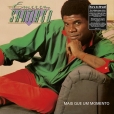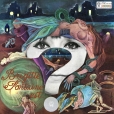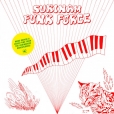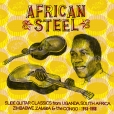Your basket is empty

‘Japanese classical music and dance, traditionally performed by families of musicians linked to the ancient Imperial court, and later passed down in Buddhist temple ceremonies and Shinto shrines, Gagaku is the oldest of the Japanese performing arts, with a history more than a thousand years old. Founder and director of the Reigakusha ensemble, Shiba Sukeyasu descends from the Koma clan, dating back to the end of the 10th century. The recordings partly reflect repertoires borrowed from Chinese music between the 5th and 9th centuries.
‘The eternal breath of the flutes (ryuteki and hichiriki) creates a sort of suspension of time, together with the hypnotic and hallucinatory atmosphere of the mouth organs (shō). The meditative tone of the string instruments (bika and koto) that punctuate the voids and silences is impressive, as is the enigmatic percussion section, with the tolling of the gong (shōko) and the calibrated beats of the drums (taiko and kakko).’
This is fire. Ring the alarm.
The opener is MM’s first recording, aged seventeen; a 45 on Amha Records. The remainder revives his 1976 LP for Kaifa, produced by Ali Abdella Kaifa aka Ali Tango, and featuring such mainstays of the scene as trumpeter Shimèlis Bèyènè, Dawit Yifru on keys, and the great Tilayé Gèbrè on saxophone and flute. In the teeth of the burgeoning Red Terror of the Derg junta, this LP was the swansong of Swinging Addis, and arguably its absolute masterpiece.
Intense, roiling Ethiopian afrobeat. Utterly killer; hotly recommended.
Classic, jazzy, funky zouk, from Guadeloupe.
‘Masterful arrangements, inventive rhythms, rich harmonies, and a perfect balance of flute and saxophone interplay. Funk, Jazz, Gospel, Afro, and traditional elements all merge seamlessly into something unique and timeless.’
“South African spiritual funk gem. slick guitar, banks of horns” - Chris Albertyn (Matsuli).
“Dynamic South African funk. An album that will make you want to dance from start to finish” - Franck Descollonges (Heavenly Sweetness).
Brassy, infectious Afro-Amerindian cumbia, porro, gaita, and mapalé from Colombia’s Caribbean coast, which injected a modern, jazzy, big-band sound into regional Afro-Colombian traditions, and took the country by storm.
The Orquesta Del Caribe, recorded in Medellin, 1946-1961: a legs-eleven blaring trumpets, soaring saxophones, meandering clarinets, rattling and pounding percussion, plus singer Matilde Diaz, led by the maestro Bermudez, widely considered Colombia’s most influential composer of all time.
Bringing together two generations of South African guitar mastery: Madala Kunene, ‘King of the Zulu Guitar’, now in his mid-seventies, and his protege Sibusile Xaba, whose playing interweaves multiple South African guitar lineages in an original, spiritualised fusion.
Recorded in Zululand in the town of Utrecht, at a cultural centre called Kwantu Village. “It’s such a broad word, but the elders teach us that Ntu is basically an energy, almost chi, an energy, a force that all living beings have within them. It’s a living energy, so kwaNTU is almost the place of this energy.”
‘A beautifully expansive collection of interweaving, finger-picked melody, husky vocalisations from elder Kunene and thrumming hand percussion’ (The Guardian).
‘In 1978, SA guitar genius Tabane stood at a crossroads. Fresh from three years’ touring in the United States, where he graced the Newport Jazz Festival alongside Miles, Herbie, Pharoah and co, and with a newly signed international distribution deal, he harnessed this momentum to a new, larger band setting, capturing a rare intensity.
‘Sangoma — ‘spiritual healer — bridges contradictions: expansive yet intimate, celebratory yet haunted by exile and return. Tracks like Sangoma, Hi Congo and Keya Bereka are not simply recordings but living testaments, songs that would remain in Tabane’s repertoire for decades. Unlike the moody, immersive character of much of his work, here Tabane is on the move — urgent, restless, uncontainable. ‘Maskanta wa tsamaya’, ‘ass-kicking’.
‘More than four decades on, Sangoma is both an historical document and a timeless invocation. A landmark in SA musical history. From his home in Mamelodi to the world and back again, Tabane’s spiritual healing endures — raw, electric, and unbowed.’
Her 1967 album of duets with Jacques Higelin, retaining arranger Jimmy Walter from her debut, the previous year. Two songs here — La Grippe and Maman — became centrepieces of the duo’s stage musical, Maman J’ai Peur.
‘The groundbreaking debut album by legendary Nigerian percussionist Gasper Lawal, originally released in 1980 on his own label CAP.
‘Lawal meticulously self-produced, composed, and overdubbed the album over four years, assembling an elite group of musicians from both Nigeria and the UK. Several of he instruments used were hand-built, including a powerful one-of-a-kind drum carved deep in the Nigerian bush. “This music is not about trends, about what is commercial or a “sound” of a particular moment,” explains Lawal, “it is about music to be felt, that gives pleasure. It is nurturing and meditative.”
‘Spiritually resonant, rhythmically rich and genre-defying,’
Classic Brazilian boogie, from 1983; including a killer version of Tania Maria’s Come With Me — Vem Menina — and the dancefloor smash O Amigo De Nova York.
Her 1968 masterwork, arranged by Jean-Claude Vannier, originally released on Saravah. Approved by Brigitte, this expanded edition features the original album, newly remastered from the original tapes, along with a second album of demos, instrumentals, and a live rendition of Il Pleut recorded for France Inter/ORTF. With a twenty-page bilingual booklet, including an introduction by Laetitia Sadier, plus full lyrics and rare archival photos.
Seventies and eighties funk, disco and boogie from Surinam — poised between northern South America, the West Indies, and the wider Caribbean — expertly drawn from 45s and LPs.




